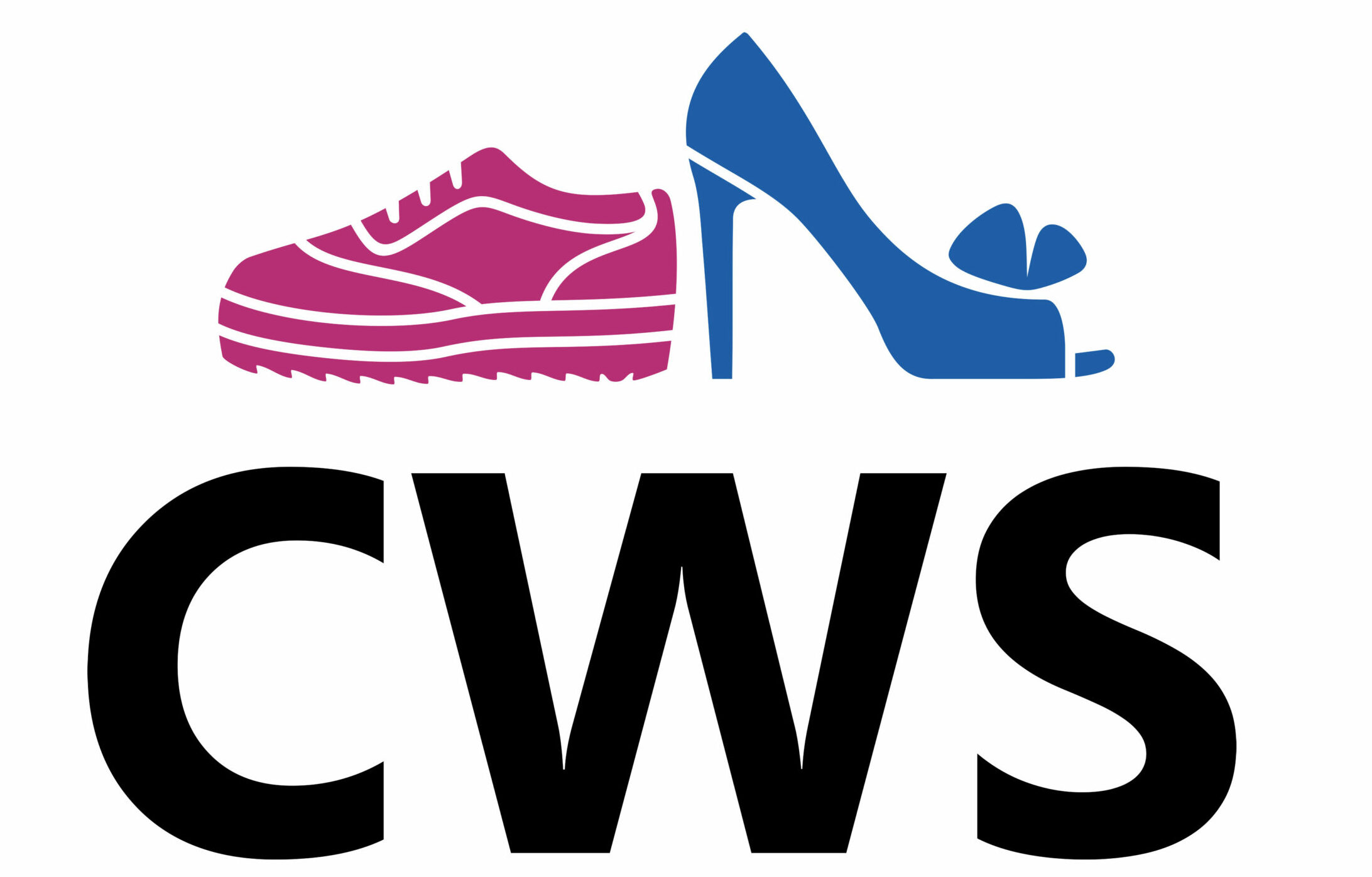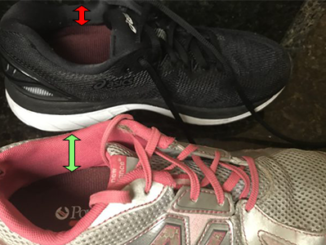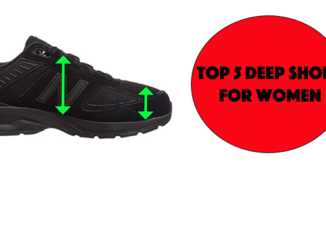
Do you have a foot condition that requires you to wear orthotics? Did your medical professional advise you to get a pair of neutral running shoes but didn’t specify which styles? I have helped several women with foot problems find the perfect pair of shoes for their feet, and I believe I will be able to help you as well. At the shoe store that I work for, I help women with foot conditions such as flat feet, weak ankles, heel pain, etc. on a daily basis, and over the years I became familiar with the best neutral running shoes for women who wear orthotics.
My Role in Fitting Women’s Shoes – Over a Decade of Shoe Fitting Experience
I have helped several women who were not able to find a single pair of shoes because of their specific foot conditions and hopefully I will be able to help you too. This experience has granted me insights on the best neutral running shoes for women who wear orthotics.
What Are Neutral Running Shoes?
Neutral running shoes are designed for women who have a neutral or “correct” walking/running pattern. You might be wondering, why would your doctor recommend a neutral shoe to treat your foot condition? Well, in order to allow your orthotics to perform their intended role they must be fitted in a pair of neutral shoes. Orthotics are designed to interact in a certain way with your feet and they won’t do well placed on a stability or “supportive” shoe trying to act upon the foot.
Some medical professionals believe that fitting an orthotic inside a stability shoe can lead to “overcorrection” and create new issues.
The Importance of Wearing Your Shoes in the Correct Size
Please note that to get the full benefits that your shoes and orthotics have to offer you must wear them in the correct size (length and width).
Most women who visit the shoe store that I work for request to wear a specific shoe size simply because that’s the size they always wore. Your foot shape and size can change over time, and some of the factors that contribute to this change are pregnancy, aging and weight gain or loss. Over time and because of gravity, your feet might get longer and wider.
You should also keep in mind that not all orthotics are the same, as some take more space than others. If you are unsure of your current foot length and shape, I suggest that you take a look at a free resource I created where I help women determine their exact foot shape and length from home:
How to Measure Your Foot Shoe Size – The Most Simple and Effective Way!
What Makes the Neutral Running Shoes that I Recommend Ideal for Orthotics?
The neutral running shoes that I recommend provide the following 4 key features:
1️⃣ Extra Volume
This feature is key as it allows your orthotics to fit deeply inside the shoes and prevents the top part of your feet (instep) from rubbing against the top part of the shoes. Shoes with extra volume also help allow the orthotic to perform its intended role.
In terms of fit, the extra volume will help prevent your heels from coming out of the shoes. Let me show you the difference in depth between one of the shoes that I recommend and a different style.
Do you notice how the orthotic is sitting a lot deeper in the New Balance shoe (grey and pink) compared to the Asics shoe (black)?

Here is an image from a different angle to help you better visualize what I mean:

2️⃣ Rounded Toe-Boxes
Depending on the type of orthotic that you get, you might require a shoe that comes with a rounded toe-box to help prevent the orthotic to destroy the front part of your shoes. This highly depends on the type of orthotic that you get (full-length or 3/4 length).
Below you can find an image to better visualize what I mean:

3️⃣ Supportive Outsoles for a Stable Base of Support
The neutral shoes that I recommend provide Innovative supportive outsoles with arch support that provide stability without getting in the way of a neutral stride. In addition, shoes that provide shock absorbent outsoles can help reduce the impact that your feet take every time they come in contact with the ground, and relieve the stress on your feet and legs.
Let’s take a look at an image that shows two shoes that provide very different levels of support. Do you notice how the shoe on the right has a more substantial and supportive outsole compared to the shoe on the left?

4️⃣ Removable Insoles
It’s highly likely that you will have to remove the original insoles of your shoes before fitting your orthotics. This will help allow extra space for the orthotics and increase comfort.
The Best Neutral Running Shoes for Women Who Wear Orthotics
Take a look at the description below each shoe to find out what features it provides and what shoe size you should order. Disclosure: Keep in mind that we may receive commissions when you click our links and make purchases.
- Available in medium, wide, and extra wide widths and also accommodate high insteps
- ABZORB midsole absorbs impact through a combination of cushioning and compression resistance
- Dual-density collar foam that offers support and comfort for your heels and ankles
- Synthetic and mesh upper has stretch for breathability, comfort and a stable fit
- Order this shoe half a size larger than your longest foot size
- Available in narrow, medium, wide, and extra wide widths and also accommodates high insteps
- Cushioning outsole with a mild rocker adds spring to your step.
- Multiple cushioning layers provide pillow-like support that works wonders to enhance comfort and help ease pain on the foot and heel
- Soft, stretchable knit fabric uppers with extra foam padding ease pressure on the foot and provide superior comfort and protection for sensitive feet.
- Order this shoe half a size larger than your longest foot size
- Available in narrow, medium, wide, and extra wide widths and also accommodates high insteps
- Cushioning outsole with a mild rocker adds spring to your step.
- Multiple cushioning layers provide pillow-like support that works wonders to enhance comfort and help ease pain on the foot and heel
- Soft, stretchable knit fabric uppers with extra foam padding ease pressure on the foot and provide superior comfort and protection for sensitive feet.
- Order this shoe half a size larger than your longest foot size
- Available in medium, wide, and extra wide widths
- Innovative arch support that provides stability without getting in the way of a neutral stride
- Removable foam insole for excellent underfoot comfort and support
- Order this shoe half a size larger than your longest foot size
- Available in medium, wide, and extra wide widths and also accommodates high insteps
- Dual-density Fresh Foam midsole cushioning is precision engineered to deliver an ultra-cushioned, lightweight ride
- Engineered mesh upper allows for breathability
- Order this shoe half a size larger than your longest foot size
- Available in medium and wide feet and also accommodates high insteps
- VERSARUN cushioning absorbs impact and reduces pressure for comfortable strides at every level of walking and running
- Added heel support for a more comfortable, secure hold.
- Order this shoe half a size larger than your longest foot size
- Available in medium and wide widths
- DNA LOFT offers incredibly soft cushioning that now extends beyond the heel, allowing for an easy transition from landing to toe-off.
- Removable foam insole for excellent underfoot comfort and support.
- Order this shoe half a size larger than your longest foot size
- Available in medium, wide, and extra wide widths and also accommodates high insteps
- ABZORB midsole absorbs impact through a combination of cushioning and compression resistance
- Medial post helps control pronation
- Order this shoe half a size larger than your longest foot size
What Shoe Size Should You Order?
Depending on the type of orthotic that you get, you might have to order the shoes a half size or a full size bigger than your current foot size. You never want to get the shoes a full size and a half bigger than your current foot size as that can allow for too much foot movement and defeat the whole purpose of wearing orthotics.
In addition, if you order your shoes a full size bigger than your current foot size and they still feel too tight, you should consider getting the shoes in a wider width or move to the next pair of shoes.
If you are unsure about what shoe size you should order or if you need a different pair of shoes for your feet I suggest that you ask your question in the comments section below or contact us directly via e-mail.
How to Tie Shoes with Orthotics – The Most Effective Way!
To get the full support and stability that the neutral shoes that I recommend have to offer, you must make sure that the shoes are properly laced at all times. I suggest that you apply this specific lacing technique:
How to Tie Shoes for Women Who Wear Orthotics — It Takes 3 Easy and Simple Steps!
I hope you are able to benefit from this resource and remember that to get the full benefits that your orthotics have to offer you must wear them in the correct shoe size.
Thank you for reading! We hope you found helpful this post on the best neutral running shoes for women who wear orthotics. Please feel free to share this post with your community on social media as well as your experiences in the comments section below. If you have any questions or need any further assistance, you can also contact us via e-mail and we will get back to you as soon as possible.












My wife always complains about not finding the right shoe. It’s always too tight on the top part of her feet so she ends up not wearing her orthotics. I guess that the challenge has been selecting a shoe with extra volume. I appreciate the guidance. Is New Balance your favorite shoe brand for orthotics?
Hello,
I am glad you find the article informative. New Balance is one of my go-to shoe brands for women who wear orthotics, but not all of their styles fit the same way. There are a few models among each shoe brand that work well with orthotics.